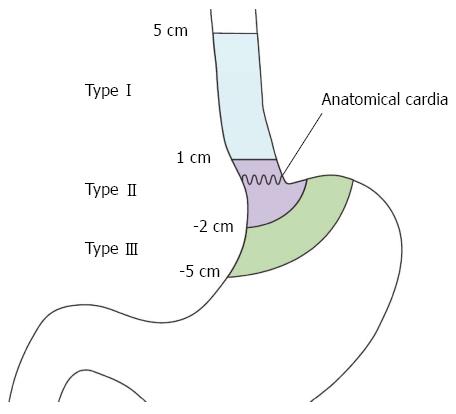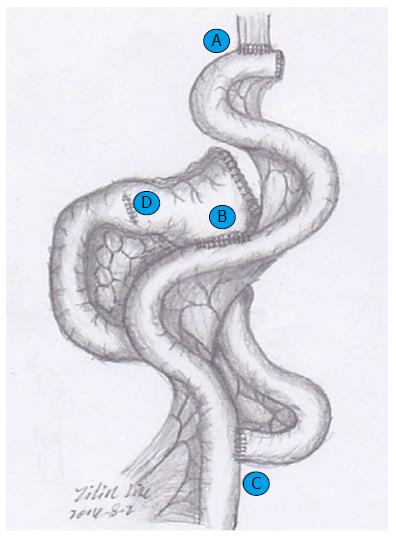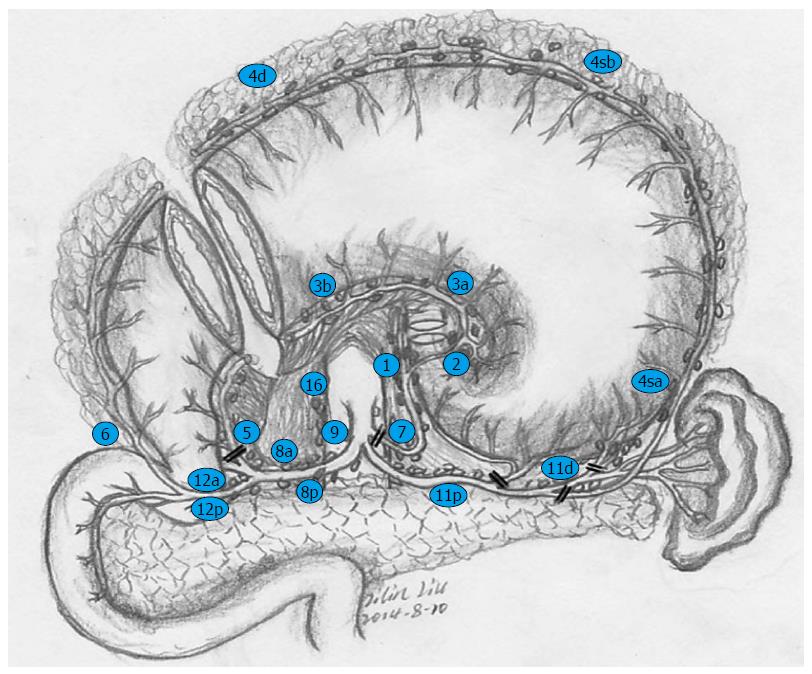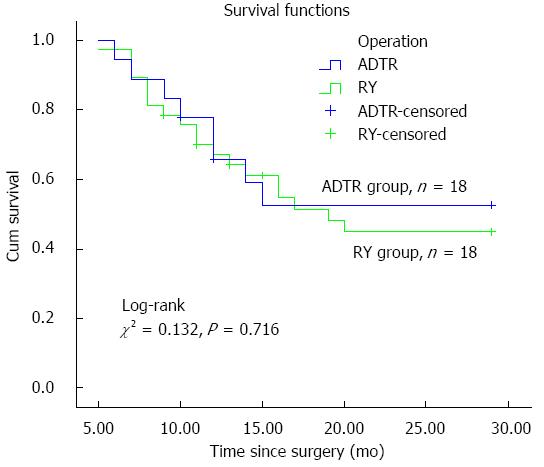Copyright
©The Author(s) 2015.
World J Gastroenterol. Sep 14, 2015; 21(34): 9999-10007
Published online Sep 14, 2015. doi: 10.3748/wjg.v21.i34.9999
Published online Sep 14, 2015. doi: 10.3748/wjg.v21.i34.9999
Figure 1 Modified Siewert’s classification according to the distance of the tumor epicenter from the anatomical cardia.
Reproduced from Mariette et al[2].
Figure 2 Antrum-preserving double-tract reconstruction.
In our study, the jejunum was divided approximately 20 cm distal to the ligament of Treitz, an end-to-side esophagojejunal anastomosis (A) was performed, and the bottom of the proximal jejunum limb was anastomosed to the side of the Roux limb using a circular stapler at approximately 35 cm distal to the esophagojejunal anastomosis (C). Then, a side-to-side gastrojejunal anastomosis (B) was performed at 20 cm to the jejunojejunal anastomosis, and a pyloroplasty (D) was necessarily implemented.
Figure 3 The extent of systematic lymphadenectomy in the antrum-preserving double-tract reconstruction approach for adenocarcinoma of the esophagogastric junction.
The details of the antrum-preserving double-tract reconstruction method are as follows: we divided the omentum majus along the transverse colon, then stripped the anterior lobe of the transverse mesocolon and isolated the pancreatic capsule at the inferior pancreatic edge and at the head of the pancreas. Then, we skeletonized the right gastroepiploic artery and vein but preserved their completeness with a No. 6 lymphadenectomy. Based on the Japanese gastric cancer treatment guidelines 2010 (ver. 3), the common hepatic artery, left and right gastric vessels, proximal splenic artery and left gastroepiploic vessels were all skeletonized and ligated, with the exception of the common hepatic artery. In addition, the lymph nodes that are marked in the left figure (such as Nos. 7, 8a, 9, 1, 3, and 11p) were dissected, whereas the resection of No. 16 was controversial.
Figure 4 Kaplan-Meier graph showing overall survival in patients grouped according to operative procedure.
P = 0.716 between groups. RY: Roux-en-Y reconstruction; ADTR: Antrum-preserving double-tract reconstruction.
-
Citation: Xiao JW, Liu ZL, Ye PC, Luo YJ, Fu ZM, Zou Q, Wei SJ. Clinical comparison of antrum-preserving double tract reconstruction
vs roux-en-Y reconstruction after gastrectomy for Siewert types II and III adenocarcinoma of the esophagogastric junction. World J Gastroenterol 2015; 21(34): 9999-10007 - URL: https://www.wjgnet.com/1007-9327/full/v21/i34/9999.htm
- DOI: https://dx.doi.org/10.3748/wjg.v21.i34.9999












